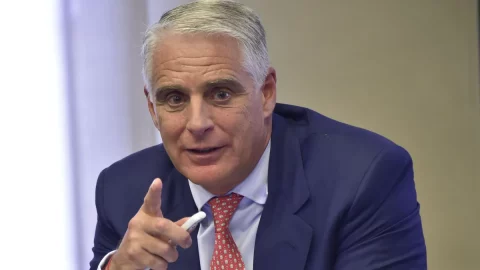Nigeria is the most populous country (179 million inhabitants) and the first for gross domestic product of Sub-Saharan Africa (569 billion dollars in 2014, 40% of the total). The per capita income ($3180 in 2014) is higher than the average for Sub-Saharan Africa ($2650), but places Nigeria among the low-income countries in the specific classification of World Bank. It also presents a relatively high concentration of wealth, where the average income in the South of the country is almost three times that of the North. Despite oil revenues and a growth rate of the economy in the last ten years among the highest in the region (6,1% average in the period 2005-14), the poverty rate of 33,1% is still high, but varies strongly between the Northeast, where it reaches 50%, and the Southwest, the oil region, where it drops to 16%. Nigeria is also in the last places for thehuman development indicator HDI, which takes into account life expectancy, level of education and per capita income. Also the conditions for doing business in Nigeria are not particularly favourable when compared with those existing in other African countries according to the“Doing Business” indicator of the World Bank (where Nigeria now occupies the 170th place in the ranking).
Agriculture contributes nearly a quarter of real GDP (20,5% sowing, 1,6% breeding, 0,5% fishing, 0,2% forestry) and employs about 70% of the workforce. Agricultural production can be divided into two broad categories: crops for domestic consumption such as cassava, sorghum, millet and tropical potatoes on the one hand, plantations for export such as cocoa and rubber on the other. Oil extraction has remained substantially stable over the last ten years at around 2,4 million barrels per day. To this quantity, however, it would be necessary to add the portion subject to robberies and leaks from wells estimated at around 0,2 million barrels per day. According to estimates of British Petroleum, at the end of 2013, Nigeria's oil reserves (37 billion barrels), were equal to 2,2% of the world total, those of gas (5,1 trillion cubic metres) at 2,7%. The weight of hydrocarbon extraction activity has halved in the last decade falling to just over 10% of GDP in 2014. However, the Nigerian economy remains heavily dependent on fossil fuels, which provide about 60% of tax revenues and over 90% of export earnings.
Manufacturing accounts for 10% of GDP. The main industries are food processing (45% of the total), textile-clothing (over 20%) and building materials. The development of this sector has been held back by scarce availability of electricity due to the insufficiency of generation plants and the limits of the distribution network. As in other neighboring countries, commercial activities and telephony have seen a significant development in the last decade reaching a weight in the GDP equal to 16,6% and 10,8% respectively. The financial sector (3% of GDP) was affected by a serious crisis between the end of 2008 and the beginning of 2009: the liquidity generated by the sale of gas and oil invested in financial assets and real estate fueled a bubble, which exploded when the price of oil fell due to the global recession. The low quality of the credit portfolio and the excessive direct or indirect exposure (through the shares offered as collateral by customers) to the financial markets have put numerous credit institutions in difficulty, for which the Central Bank had to intervene to help. Nine major banks were recapitalised by a total of $4 billion on large credit losses, while three of these were nationalised. Furthermore, it was establishedGovernment agency AMCON, with the mandate to acquire bad debts. In 2012-13, the overcoming of the financial crisis and the high returns attracted substantial capital from abroad for portfolio investments and offered local currency support. Starting from the second half of 2013, however, these inflows slowed down and the currency was affected by depreciation pressures, which became particularly strong in the second half of 2014 following the drop in crude oil prices.
According to preliminary data, GDP growth accelerated to 6,2% in 2014 from 5,4% the previous year. The hydrocarbons sector, despite having recorded a further decline (-1%), showed a better stability compared to 2013, when the safety problems in the productive region of the Niger Delta and the periodic interruptions of activity in various plants due to poor maintenance had led to a 13% drop in production. The non-hydrocarbon sector recorded a growth in real terms of 7,0% compared to +7,5% in 2013. The acceleration of the agricultural cultivation activity (+4% from +2% the previous year), the most important sector of the economy with a weight of more than 20%, was balanced by the slowdown of some services, in particular trade , communications and real estate. Construction activity continued to record sustained growth rates (+13,1%)mainly driven by ever-growing demand. Consequently, construction had a positive impact on related productions such as cement which, together with food processing and textile-clothing, contributed to the increase (14,7%) of overall manufacturing production.
As published by the analysis of the Intesa Sanpaolo Study Centre, it is believed that, during 2015, the economy will be affected by the drop in oil prices and the lesser boost from public spending after the elections, with GDP estimates expected at around 4,5%. The trend rate of inflation closed 2014 at 7,9%. In the first quarter of this year, the depreciation of the exchange rate led to new inflationary pressures, with the trend rising to 8,5%. However, high interest rates are expected to favor a partial reduction of pressure by the end of the year.
Nigeria's balance of payments records a substantial current account surplus (on average equal to 16% in the five-year period 2009-13), determined by the commercial part and by transfers, especially remittances. The financial account, net of the “errors and omissions” item (the large deficit of this item signals speculative capital outflows), is in balance thanks to substantial foreign direct and portfolio investments which offset significant outflows for other investments. In the first six months of 2014, the current surplus narrowed to 6,1 billion from 8,3 billion in the same period of the previous year mainly due to the decrease in the trade surplus (down to 17,6 billion from 22,2 billion ). In the same period, the financial account went into deficit (3,4 billion) due to the fall in FDI and portfolio investments and the reduction in open positions in foreign currencies. These dynamics reflect growing concerns about domestic political developments and exchange rate stability. In the first half of 2014 the balance of payments recorded a deficit of 5,5 billion compared to 3,8 billion. Foreign exchange reserves, amounting to around 37 billion last June, fell further in the following months also as a result of interventions by the Central Bank to support the currency, closing 2014 at 34,2 billion. This figure compares with an external financial requirement estimated by EIU at 16,5, for a reserve cover ratio of 2,1. At the end of 2014, reserves exceeded the entire external debt of 21,3 billion at the end of 2014 (nevertheless almost tripled compared to 2006 when the country had benefited from the debt reduction program of poor countries).
Unlike other commodity exporting markets, Nigeria has not exploited the long favorable commodity cycle to strengthen and diversify the economy, which remains heavily dependent on agriculture and hydrocarbons, two sectors strongly influenced by factors beyond the control of the authorities, such as climate change and oil prices. The increased proceeds from hydrocarbon exports set aside in the ECA Fund have now been almost entirely used to finance public spending. The non-oil public deficit is particularly high (close to 40%) and the control of current expenditure (see the items wages, subsidies and transfers), which would be necessary to make the fiscal position sustainable in the medium term, appears difficult to implement in the face of a large share of the population in poverty and political pressures. The precariousness of the political framework, the deep regional divisions and the destabilizing actions of fundamentalist groups in the North and of the gangs operating in the Niger Delta oil region in the South of the country, to which economic and sectarian factors contribute, make the implementation problematic of the reforms that the country needs. In particular, see the hydrocarbon sector, where the subsidy system absorbs substantial state resources and where, due to the malfunctioning of the refining plants, 80% of the fuel is imported. In recent years, the deterioration of the external and fiscal position with the consequent increase in public and external debt, without forgetting the deterioration of the political climate, led the S&P's rating agencies to cut their sovereign debt rating in March rates from BB- to B+ and Fitch has introduced a Negative outlook to its BB- rating.





